American Primeval
6 episode mini series
Netflix air-date January 9th 2025
Directed by Peter Berg
Written by Mark L. Smith
Starring Taylor Kitsch, Betty Gilpin, Dane Dehan, Shea Whigham, Lucas Neff, Sarah Lightfoot-Leon, Derek Hinkey, Kim Coates, Preston Mota and Shawnee Pourier
The Western genre has seen a bit of resurgence lately in contemporary times where the very definition of what a true Western is being painted with broader generalizations to include modern day dramas without any historical context. Thus sub genres like ‘Neo-Western” had to be created to accommodate a more loosely fitted definition. However great westerns always have taken place in the 1800’s in a sometimes historical context when America expansion was moving westward, and the American Government, lawmen, bounty hunters, outlaws and poker players were the legendary characters that fit into this tapestry of the stories being told. Not to mention conflict of some kind was the great driver for telling stories along with characters overcoming challenging obstacles that is both internal and external to reveal their true selves.
Peter Berg’s past experience of directing films of the historical revisionist kind is somewhat sketchy. Films like “Lone Survivor, and “The Kingdom” were lambasted for either being inaccurate or egregiously distorting facts when it came to certain details of retelling the stories of those films. His other films “Deep Water Horizon” and “Patriots Days” were films that generated buzz of praise but failed to recoup their production costs. About the only film in Berg’s portfolio is “Friday Night Lights” which managed to win over both critics and audiences when it came to his brand of historical fiction.
Now that brings us to Peter Berg’s latest attempts at delving into another historical fiction but this time involving the Wild West. When it comes to westerns and loosely based events in American history, its hard to imagine having higher expectations of seeing such narratives come to life that captivates audiences without prejudice where Bergs name is associated in the ending credits such as “American Primeval.” From a far away view this mini series starts off with a pretense of mystery that slowly builds and becomes known in its expose, having an inviting but intriguing world to explore, but once we get to know the details, it leaves more to be desired without any real sense of resolution.

American Primeval is loosely based on the Mountain Meadows Massacre to which it starts off with depicting the lives of Sara (Betty Gilpin) and her Son Devin (Preston Mota) who arrived from Boston at a desolate station somewhere in a barren west landscape awaiting for an escort to take them to a place called Crook Springs to reunite with her husband.


Along the journey they stop at a place called Fort Bridger where they are crudely introduced to its founder Jim Bridger (Shea Whigham) after their escort is savagely killed by a drunken French explorer. \

Sara in her desperate insistence that they must get to Crook Springs even while Bridger is trying to discourage her from making such a dangerous journeys convinces him otherwise with her overt persistence. Bridger is reluctant and feeling somewhat of having a sympathetic disposition towards Sara and Devin’s dire situation, Bridger tries to lead them to a man name Isaac that could help guide them through the perilous landscape of a unforgiving western frontier. When Isaac refuses, Sara then meets a Moron couple Jacob and Abish Pratt who are planning to travel with the Fancher wagon train caravan of other Mormons on the way to California who then decides to join up with them.

Somewhere along the way while traveling in the horse wagon, Devin goes to the back of the wagon to retrieve something when he discovers a stowaway named “Two Moons” a mute indigenous Native girl to which Devin decides to conceal from his mother knowing.



Things were developing quite nicely as Sara starts to socialize with Jacob, Abish, and the other Mormon travelers, while Devon would secretly sneak food to the stowaway ‘Two Moons.

Suddenly disaster strikes in the form of tragedy when the Mormon army of Brigham Young, (LDS, Latter Day Saints) along with Paiute Indians ambushes the Fancher caravan camp because they are squatting on land belonging to Brigham young.


Isaac, who was watching from afar of these horrific events unfolding, ends up rescuing Sara and her son Devin. Two Moons who somehow ends up surviving the massacre that would see very few survivors, joins up with Devin and Sara later on their journey that helps them survive.

Jacob gets his head almost fully scalped but is saved when his attacker is killed while his wife Abish is abducted by a Paiute with intent to sell her on the black market.

Meanwhile back at Fort Bridger, a man named Virgil Cutter discovers there is a bounty on Sara’s head for the murder of her ex-husband and has a blood lust thirst drive with evil designs, with intent to collect on every penny of the bounty’s reward.


Another character that enters the fray is an Indigenous masculine warrior figure by the name of Red Feather who seeks to clear his tribes name as they are being wrongfully accused of carrying out the Massacre of innocent women and children and who is mercilessly being pursued and investigated by Army Captain Edmund Dillinger.


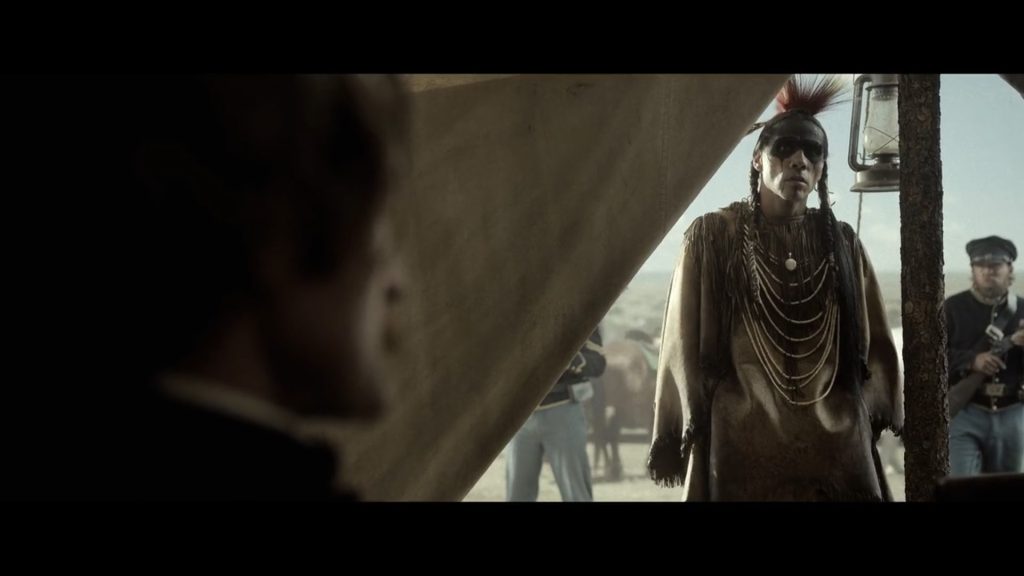


In this 6 part mini series somehow all of these separate drama stories are suppose to intersect in order give audiences an impression of the harsh realities of what the wild West looked like in the midst of conflict between religion and politics.
When taking a closer look at the Western genre taking place on the American frontier previous years, in the narrative form both in film and television its easy to observe in retrospect that audiences have gotten a sanitized version of what the Wild West was like. TV shows like Bonanza, Gun Smoke, Rawhide, or films like “The Searchers”, “Stage Coach”, “Rio Bravo”, and “Once Upon a Time in the West” were romanticized depictions of the West that never strayed from their scripts to entertain its loyal following. American Primeval with all its grittiness, muddy, cold, harsh and brutal realities was quite the departure from traditional Westerns. With recent productions such as Meeks Cutoff, Bone Tomahawk, and or True Grit are movies that are reshaping and giving a modern appetite for more intensity to refine the genre itself. American Primeval sort of fits in this latest trend, but in a way stands out a bit more for its realistic portrayals of both its scenery and the characters.
Peter Berg’s penchant for action film making is one thing that stands out the most when viewing this series in its totality. The stunts, the hand-to-hand fighting, the gun shooting, and the incorporation of CGI and VFX to blend in with all the action are superb. One thing is for certain that keeps viewers intensely gripped is the pacing of unpredictability that unfolds with each character in their own undeveloped story arc’s and is the one element that make this series intense and compelling to watch.
The Cinematography of Jacques Jouffret has left his mark with the use of wide angle lenses and earth tone hues that was reminiscent of similar styles used in movies like Hostiles, The Road and The Revenant (which coincidentally the screenplay was co-written by Mark L Smith) that gives this series a vintage but moody look throughout.
The hair, makeup and costume design for all the characters through out the series was also superb and it really shows how much attention was given to details to give the appearance of time period authenticity.

When looking and thinking about the story itself and the character development or the lack thereof is when we start running into problems that make this overall production such a wasted and missed opportunity for both the producer and the director. The lack of vision to not realize the potential to have turned this production/story into a much more bigger prize or failure to reaching higher plateaus of story telling and character development is really a shame. For example, we get all the introductions to interesting characters with their own story to tell with out any depth or for that matter resolution to connect the stories to meet in a full circle.
The impression that I get is that Mark L. Smith had to write with the objective to cram a possible 6 seasons into 6 hours, so we have to give credit where its due when it comes being able adapt on the fly in what otherwise can be considered a condensed story-line under pressure as he incorporates some exposé details of characters past through dialogue which in turn temporarily serves as a place holder to advance the story itself. It doesn’t quite work though in the sense when audiences are finished watching the series and are left empty handed, thus we soon forget what the story was even about.
What makes this also disappointing that leaves a lot of meat on the bone, is having to accept the realization what could have been possible to exploit but never realized about this production. The individual stories we as audience members are introduced to where we were just getting started to learn and invest our emotions in, makes audiences feel cheated that they were never given the chance to go further, deeper into the story itself which is probably the most damaging aspect, we never feel anything. However to be fair, that is not to say there weren’t genuine moving moments, because there were but they are just moments and fleeting ones at that.
For example, the Sara, Isaac, Two Moons and Devon story plays out like a Halloween horror adventure; yeah like a pack of Wolves were really trying to get into a cabin to eat Devon and two Moons while Isaac looked for Sara who was kidnapped after being hunted all along by Virgil the bounty hunter. We never really suspected that there was a love interest developing between Sarah and Isaac but like the story itself it’s always too late for any happy endings in an already nihilistic grim landscape. In the end we don’t get to find out what happened to Sara, Devon and Two Moons on their way to California. Did they end up making it or do we soon forget to not care much about them because we weren’t allowed to get too close to them with such shallow story telling?
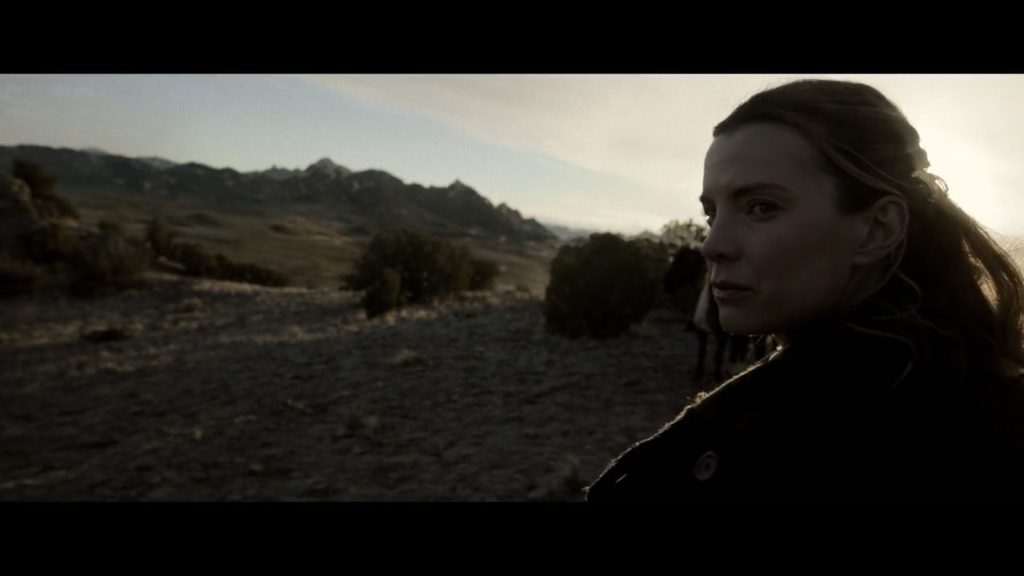
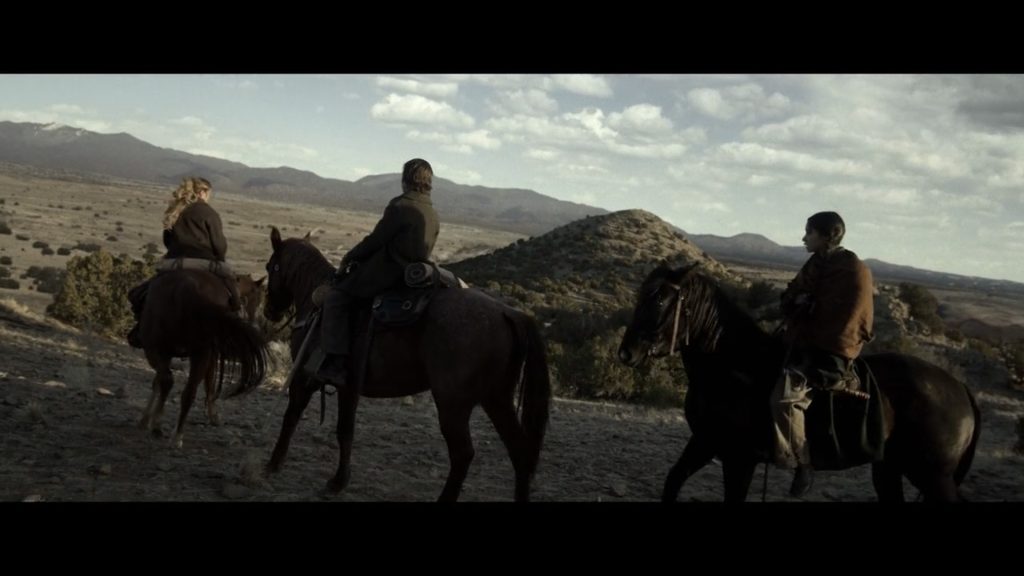
The love story of Jacob and Abish was another aspect of this narrative that goes nowhere and ends in tragedy and irony. The Mormon, US Army, and Shoshone conflict with its religious and political undertones is never fully resolved and over sensationalized for dramatic effect instead of exploiting more historical context in realistic terms. Then of course there was Jim Bridger real life story whose fort that he built was being targeted by Brigham Young himself out of fear of the US Army acquiring it and setting up shop in Mormon country when tensions are already on the cusp of a larger conflict brewing beneath the surface.



Not once throughout this series are any of these intersecting story-line narratives develops enough for us viewers to be emotionally invested in the characters lives or to know more intricately their secrets, motives, or moral codes to make viewers profoundly affected on a passionate level. I think spending more of the focus on any character that would have allowed the writers to flesh out the story more with the supporting cast would have probably yielded better relevance when pertaining to the themes of the overall stories waiting to be told. I think I also probably would have liked to hang out with Jim Bridger at his Fort with all the clutter he collected like a pawn shop and watched all the unsavory characters that would show up at his place at one point or another. This at the very least makes for a better story development that would have left room for more creative license while at the same time not abandoning the historical context of the other story-lines that could have been developed to flush out over the span of a few seasons.

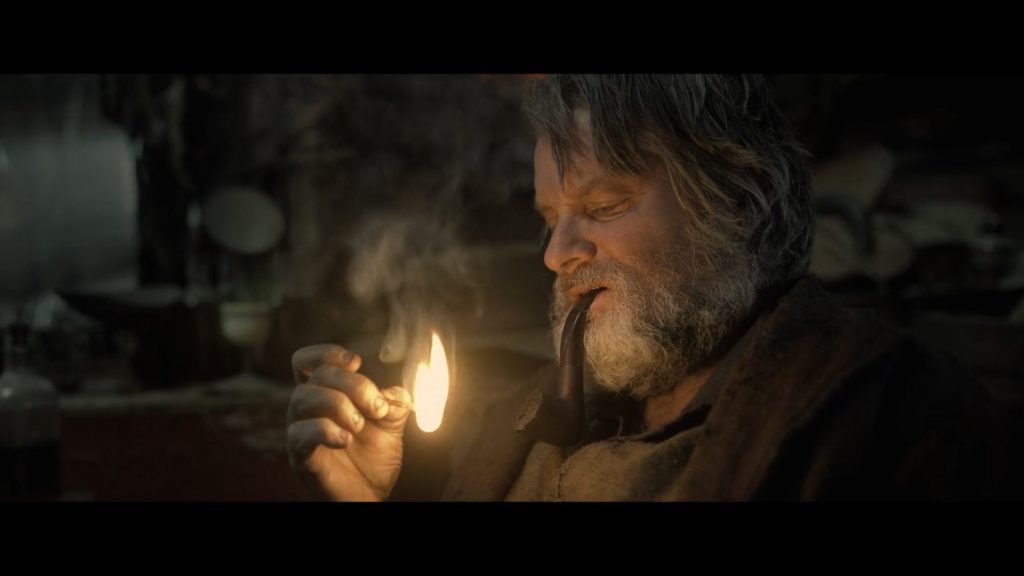
Another example of this is Captain Edmund Dellinger’s role, (Lucas Neff) while a minor one, seemed like a too important and compelling character to ignore that was simply abandoned for convenience to resolve the story in a more dramatic violent but premature fashion. The scenes of his investigation into the massacre by questioning the LDS and having reservations about the Shoshone Indians having a part in it gave the viewer a sense that the story’s tension was building and going somewhere interesting but only to leave audiences disappointed without resolution.
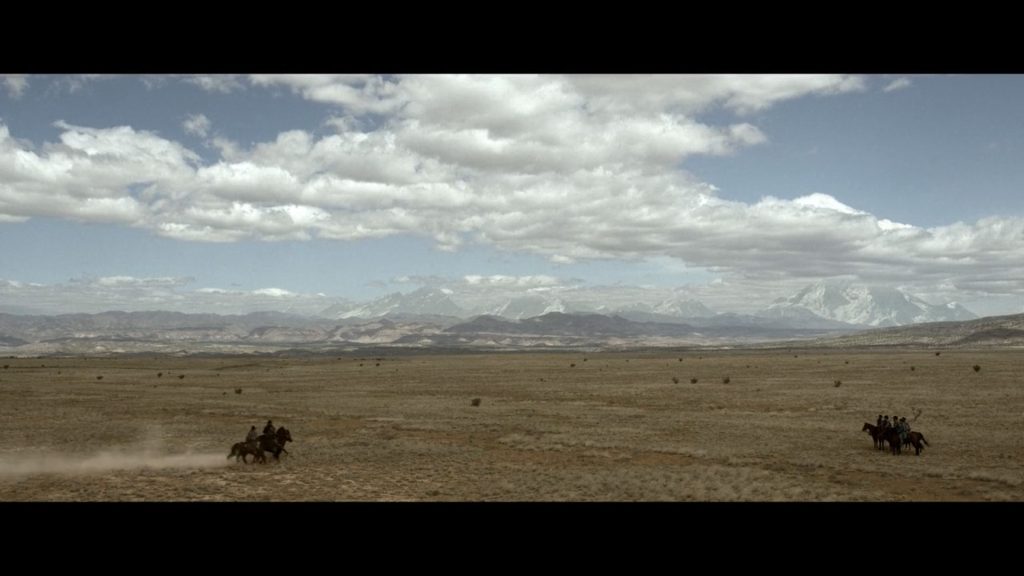
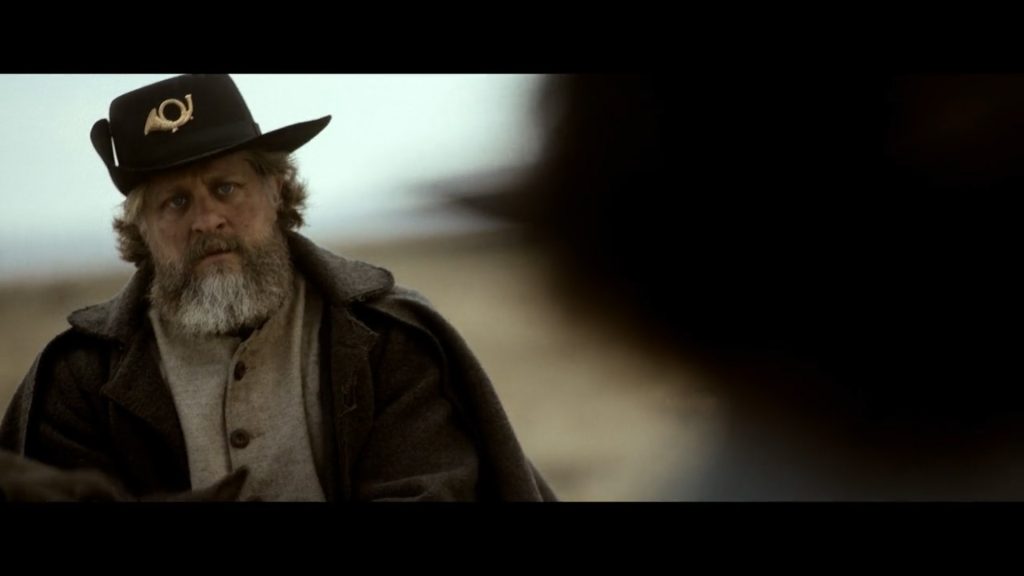
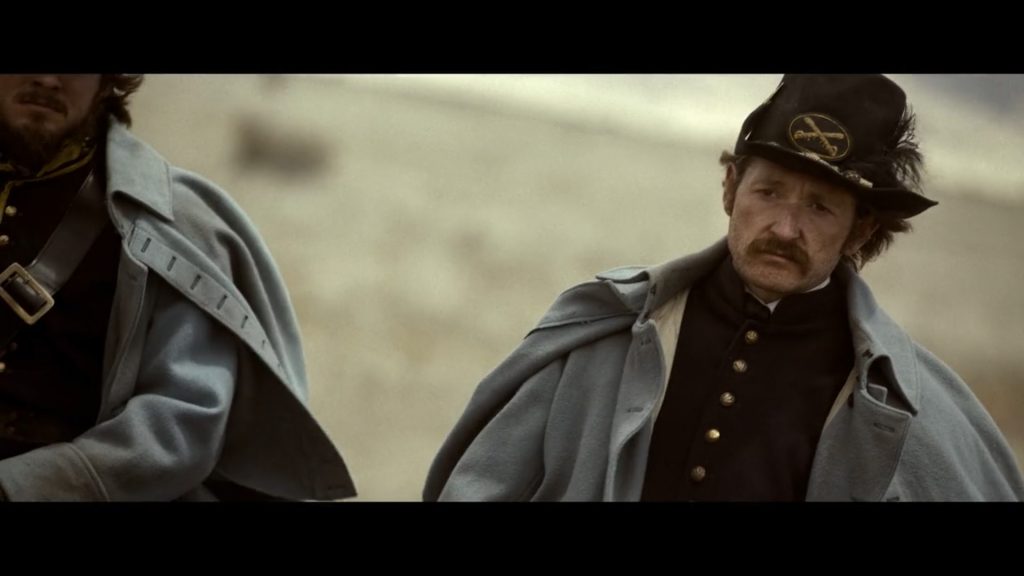
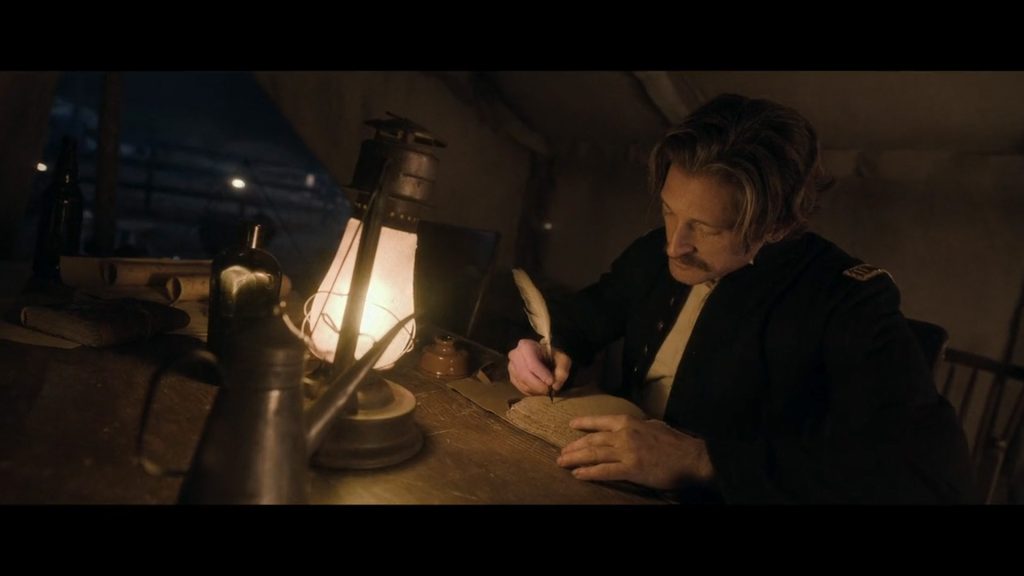

One detail to pick apart is the fact that Director Berg decided to have a voice over for Captain Dillinger to detail his self reflections and events stirring his soul into conflict. It was rather a odd and ill timed sequence and puts into question whose story does this belong to if this didn’t start off from Captain Dillinger narrating the story? No other character throughout the series has such VO narration but we get one for Dillinger towards the end of the series? This made no sense and only added to the confusion of an already flimsy commentary.
The other aspect to this particular narrative was Captain Dellinger’s subordinate lieutenant Pepper (Kit Weeks) and his secret betrayal to reveal classified messages when he pays Wild Bill Hickman a visit behind Captain Dellinger’s back. It seems on the surface he was just killed off for mere convenience rather than developing that angle of the story to build more dramatic intensity to a unpredictable climaxing conclusion.
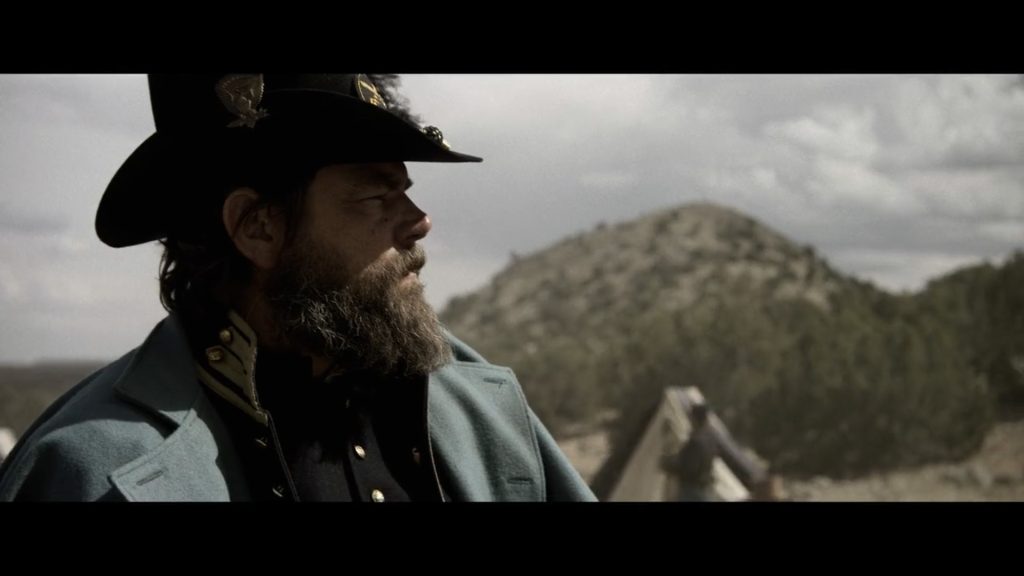
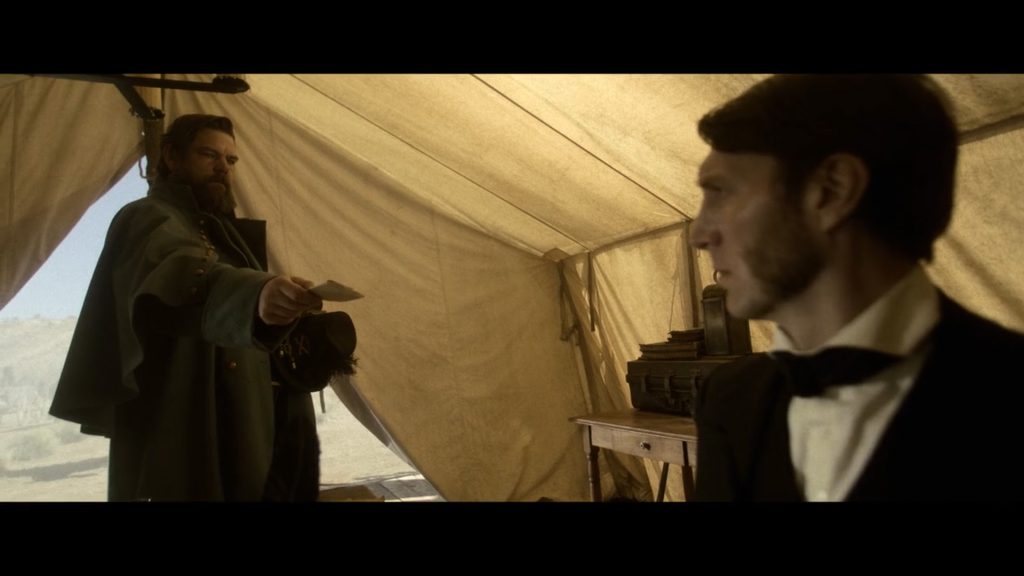
When analyzing the story itself on a micro level point of view its fairly obvious that it could have benefited following closer to historical context than the creative license that Peter Berg takes to loosely base this story on. The Mountain Meadows Massacre is an event that most of the world wouldn’t know about this piece of history of the American West therefore Berg’s portrayal of it does it a great disservice; by turning it into a free for all action type 6 hour movie with no context or resolution to speak of, leads people to not learn more about this event in a historical sense but instead are exposed to generic impressions that is cheapened for entertainment purposes.



Speaking of historical context there are many examples of inaccuracies to touch upon when contemplating the missing ingredients that would have made this series great. The key word here is “historical fiction” to which has a sort of flexible definition when describing this grisly depicted tale, but this series strayed too far from having any foundational integrity when it came to depicting a historical narrative. This is of course when looking at the actual Utah war itself to which is often referred to as, is when the Federal Government weary of a theocracy taking root in the Utah Frontier sent soldiers to the Utah territory that exacerbated and heightened tensions. Therefor their role, Mormons known as the LDS, Latter Day Saints would grow distrustful of outsiders out of fear of igniting a armed conflict.
When referencing the polygamous prophet Brigham Young, second president of The Church of Jesus Christ of Latter-day Saints and the first governor of the territory, about the only thing that this production seems to get right was his haircut according to most historians. Also Kim Coates depiction of the late pioneer was a bit of a miscast for this show as Brigham Young would have had lighter red sandy colored hair and not the dark hair with brown eyes as seen by what Coats.

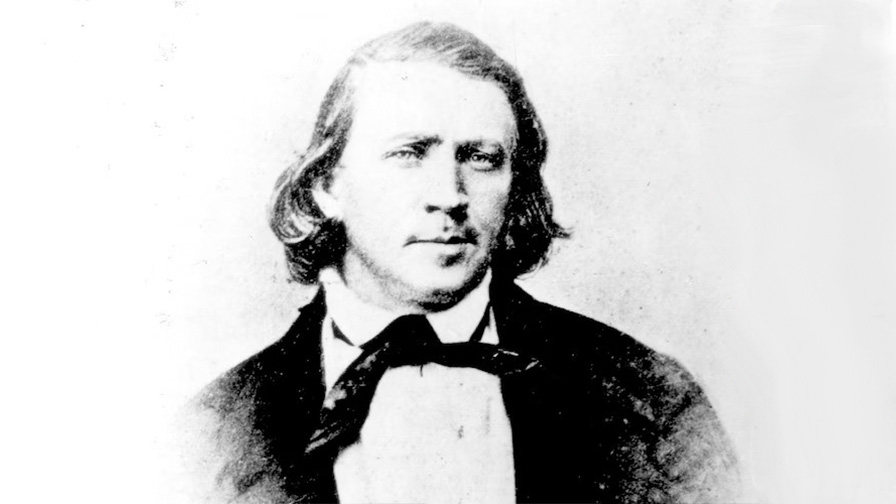
When speaking of the massacre itself and Brigham’s involvement in it, according to historical accounts settlers of the region sent a letter to Young requesting protection and in response he instructed them explicitly to leave the settlers alone but his letter arrived too late after the massacre already occurred. It seemed he was fine with killing of Indians instead but on the other hand he wasn’t looking to start a war with the Federal Government, a sort of contradiction on religious doctrine alone.
In one of the scenes when he gives the orders of attacking the Shoshone village, is contrary to what his attitude was towards Native Americans even though he was a walking contradiction of those times. As he was famously quoted “better to feed them than to fight them” but in reality, what usually happened was going back forth between counseling peaceful means and authorizing violence.

Another detail when taking a closer look at how Bringham Young is portrayed in this series, a fictional representation as someone who was acting like an anointed underworld czar as an attempt to put forth a trope of religious hypocrisy as a means to having more broad appeal to audiences as opposed to depicting a more sympathetic character. In reality and according to historical accounts, Bringham Young was a much more complex person than he was given credit for who was shaped by various traumas of his past, such as the murder of his founding religious leader Joseph Smith, and his brother Hyrum in Illinois. As a result of these various traumatic experiences Brigham Young became more paranoid with the internal dissension of his own Church and was always on edge of the constant threat of the US Government interfering to take control of the Utah territory. When you add all this up in the aggregate there is certainly a plethora of material that could have been explored more to give this series a more authentic dynamic than the one presented.
It seems Brigham Young was a more charismatic character than the filmmakers cared to show as he probably could have gone back and forth more with Jim Bridger with off colored jokes, or the possible vulnerabilities that such a character might have revealed. The reality is Bringham Young met Jim Bridger only once and was not a frequent visitor of the fort itself but elected to send messengers on his behalf to negotiate the purchases of it instead not showing up every day like he was presented as in the series. Also Young saw the Fort as a strategic place for the US Army to enter the territory and by burning it down which he did after he successfully purchased it without of course killing innocent people in the process, would have made life for more difficult for the Government troops.
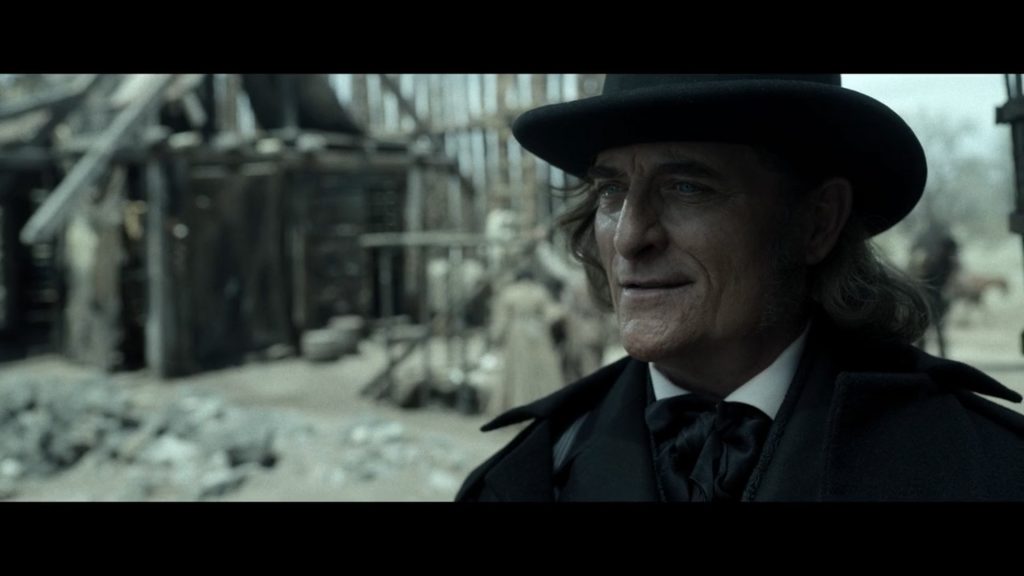
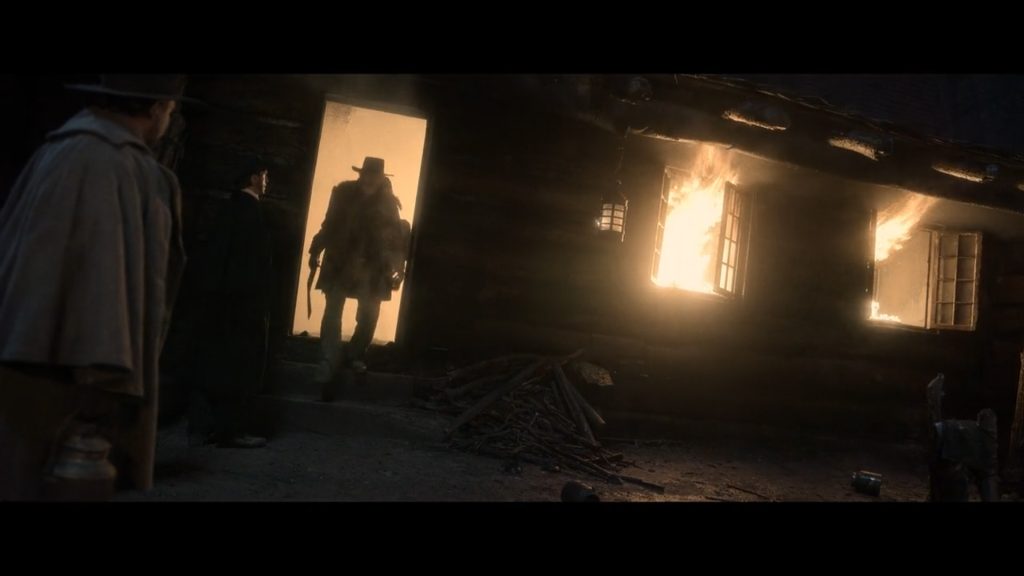
Another important detail when referencing any narratives involving the Army is the fact the Mormon militia as they were so often referred to as, under no certain terms would have massacred an entire US army regiment. This part of the story within the series is completely fictional and over the top. The reality is had such an event occurred the full might of the Federal Government, would have sought to snuff out a rebellion orchestrated by a Moron militia, something Bringham Young knew all too well and wanted to avoid at all costs.
The other character that supposedly was Bringham Young’s right hand man was known as “Wild Bill Hickman” (Alex Breaux) and with his compelling larger than real life story that was never exploited or incorporated into a deceptive sinister antagonist speaks volumes to the understatement of being a missed opportunity.
Having the character Wild Bill Hickman as having a more prominent role would have also offered a more dynamic wrinkle into the series as a plot driver for more nuanced intensified intrigue. Secondly the character portrayal that is played by Alex Breau was from the start not only a miscast but also a complete inaccurate depiction of whom Hickman was in in real life. Instead we get this jaunty looking dude who gets his toes chopped off with a shovel by Bridger in one scene where he attempts to take his fort by force that reduces his power dynamic quite significantly with no resolution, not to mention that it never happened in real life. The character who has a few appearances to enforce the idea he is playing politics with sinister intent never really develops to play a more prominent role in the series.

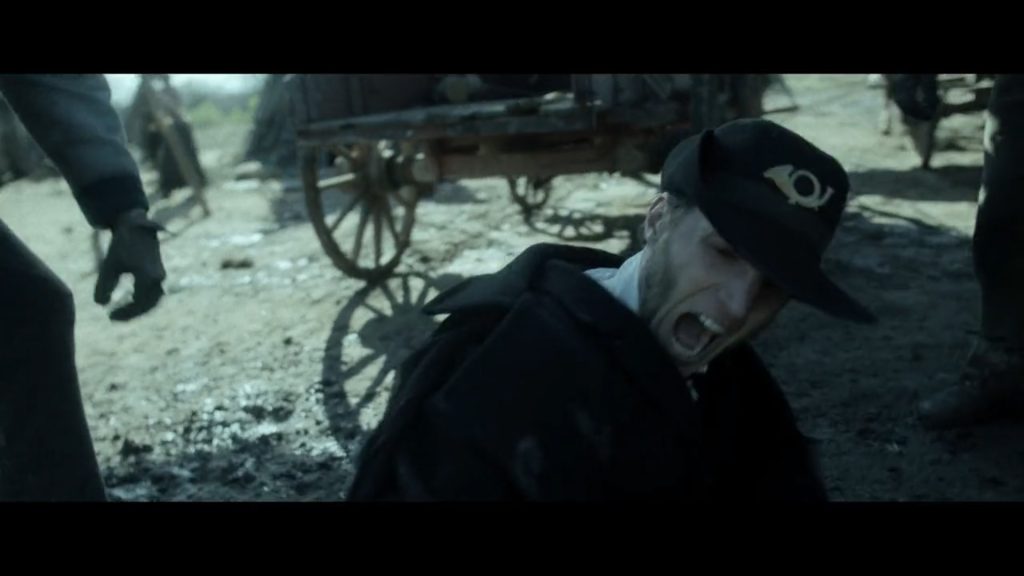
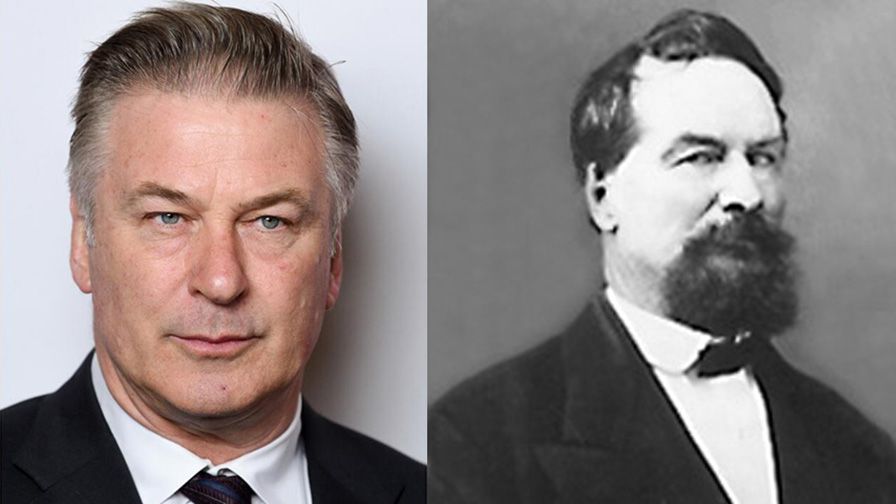
According to historical photos of Hickman, it would seem that casting Alec Baldwin would have been a lot closer to resembling the true to life figure that would have offered a lot more interesting character intensity for the story. For starters “Wild Bill “Hickman was known to have committed genocide having killed several Native Americans in the name of colonization on the way to Salt Lake city. This of course was on more than one occasion having also participated in the massacre of Timpanogos that became known as the Provo River Massacre where a dispute took place in the Utah valley after one of their own was murdered by Mormon colonists. During the course of violence, Hickman documented killing the chief of the tribe, Old Elk, whose head he removed with his Bowie Knife and brought back to Fort Utah to which allegedly he hung from the walls. The massacre ultimately killed around 50 Timpanogos men and the surviving women and children were taken and sold as slaves to church members.
Later in life of course Hickman had a falling out with Bringham Young that eventually led to his excommunication from the LDS church. Subsequently Hickman would go on to confess to the murder of several people at the request of Brigham Young after being interrogated by a deputy Marshall who was seeking to build a case against Brigham young. After Hickman wrote his biography while under protection at Fort Douglas because he was not only a potential witness but genuinely feared for his life, Bringham Young died in 1877 therefore nothing ever became of the so called allegations that were leveled against him. Wild Bill Hickman died in 1883 and was also never charged for the murders that he confessed to.
Conclusion
Lets start with the positives, first and foremost the acting, the action oriented scenes, and costumes and the scene set designs were all excellent. That is the extent of what can be considered the pros in a debate in finding value in this Netflix series. Everything else becomes cannon fodder for a story with a shallow depth that fails to deliver on the substance. American Primeval is set in a particularly bloody tumultuous time in a place where the drama of Western colonization often clashes with the living indigenous culture, and there’s nothing pretty or palatable about it. Quite the opposite — it’s hard to imagine that the real thing could’ve been any more hideous than what was depicted. It’s grim beyond realism or even borders on being completely nihilistic, pushing into the dimensions of intentional narrative cruelty. And while some of the greatest films and Television series is inspired by being surrounded by death, despair, and getting down and dirty submerged deep into the mud, American Primeval is not nearly creative enough to compensate for how depressing it is to watch as a series.
In comparison to the old western movies like John Ford’s “The Searchers” or William Wyler’s “Big Country where we get to view skies of blue and hues of reds and yellows that is pleasing to the eyes, American Primeval removes the colors from our aesthetic sights to deliver an impression of stolen hopes of grey and brown that usually makes it hard to endure for 6 hours to watch.
American Primeval‘s biggest flaws are, for the most part is its failure to add a more robust and substantive developed story narratives in which could have impressed to go along side the Western sprawl and the action pack propulsion that would have been rare in today’s television. Aside from their over-reliance on CGI blood and carnage, the series’ action sequences remain consistently breathtaking and kinetic throughout its six hours as well. American Primeval begins to seriously take a U-Turn for the worse in its third hour, which wants to be as brutal and punishing as possible leading its audiences down a nightmarish detour involving Gilpin’s Sara that feels over gratuitous and unjustified in moments where we begin to see some signs of vulnerabilities and human emotional characteristics being introduced only to be abruptly taken away and even more so the longer American Primeval goes on.
When looking at the director Peter Bergs complete career filmography, there is nothing in the aggregate that stands out as being successful. In fact with the only exception to his credit that is passable are: “Friday Night Lights” and “Hancock” that can be considered somewhat successful films that he has directed while the others were not worth mentioning. That being said however as I mentioned earlier to his credit was his use of action has always been among the best. He exhibited a lot of the practical stunts used in Lone Survivor, and his use of CGI and VFX such that the superhero fights in Hancock felt genuine and was undoubtedly momentous to a debatable subgenre. So, it’s not surprising that every time American Primeval begins a set piece, you witness some of the best stunt work; shootouts, hand-to-hand fighting, practical effects, and almost picture perfect rhythmic mix of VFX and CGI. In essence Peter Berg was probably the right director for the action sequences and the wrong one chosen for telling a story that got out of control and too big for him to handle to make it into something worth our while for the short time we invest watching it.
Instead of getting a series that can be on par with as HBO’s “Deadwood” or reaching higher production values such as “The Wire” the viewers in turn are getting a series without any meat to the plot, a troubling trend with other recent Netflix produced series. So in other words American Primeval should have been a series that had explored on a deeper level of complexities and details of the Mountain Meadow Massacre not an impression of the recreation of a video game like “Red Dead Redemption.” The biggest disappointment in all this is the fact that the assembled cast for this production did an excellent job in their respected acting roles and deserved better writing for their efforts, and thus the lack thereof was this series undoing. Unfortunately this was tragically a missed opportunity for greater things to happen as a series that never realized it’s potential and thus can be considered a failure by most accounts. While it is not to say that this series can’t be appreciated or is unwatchable, however do so in small doses as we as a culture love to binge watch our entertainment but sadly, this is not one of those productions that would compel us to do such things and come away feeling profoundly affected. In the end American Primeval was able to give us a good impression of a realistic portrayal of the rugged West and its daily struggles and challenges within all its brutalities but as far as story depth is concerned it turns out to be shallow waters and a missed ship already set out to sea.


